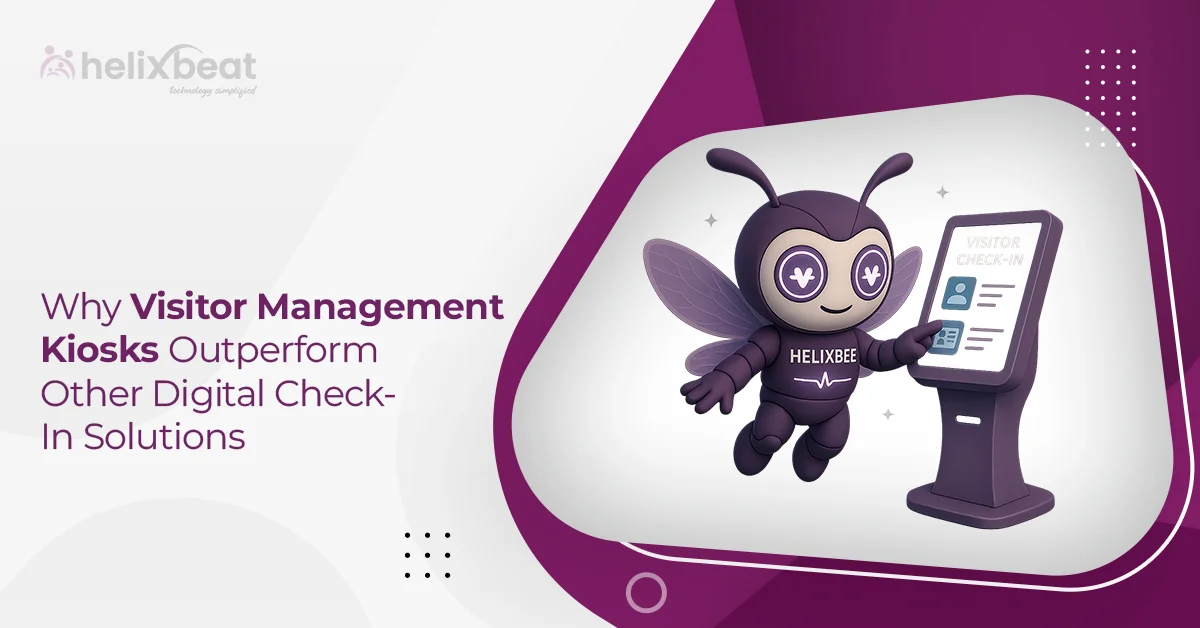What if the best way to improve software is to break it—on purpose? That’s the bold approach embraced by teams who understand that manual testing services are not just about following checklists but about pushing software to its limits. At Helixbeat, this philosophy guides our work as we uncover hidden issues, strengthen systems, and deliver rock-solid products.
Destructive testing, sometimes called “negative testing,” means intentionally using software in unexpected ways, bombarding it with strange inputs, and probing for weaknesses. It’s a bit like stress testing a bridge or crash testing a car. Only by breaking the software can you truly know how strong it is.
Let’s dive deep into how this deliberate breaking transform software quality and why manual software testing services remain indispensable even in an era of automation.

Table of Contents
What Is Destructive Testing and Why Does It Matter?
Destructive testing involves intentionally causing failure scenarios to ensure the software behaves gracefully or recovers quickly.
How Does Destructive Testing Differ from Regular Testing?
While typical testing confirms expected behavior, destructive testing seeks out the unexpected. It aims to simulate real-world mistakes, attacks, or system failures that automated tests might miss.
Why Manual Testing Services Are Perfect for This
Humans excel at creative, unpredictable thinking. Manual testers explore software like curious users, trying strange sequences or odd data combinations. This intuitive testing catches flaws that automation can’t always foresee, making manual testing services essential for thorough quality assurance.
When and Where Should Destructive Testing Be Applied?
Not all testing requires breaking things. Knowing when to use destructive testing maximizes its impact.
Critical Systems with High Risk
For software where failure can cause financial loss, data breaches, or safety hazards, destructive testing uncovers vulnerabilities before real users encounter them. This is a crucial step within manual software testing services to protect vital systems.
New Features or Major Updates
New functionality often brings unknown weak points. Applying targeted destructive tests during development and release phases helps prevent costly rollbacks and failures in production.
Complex User Flows
Applications with many integrations or complex workflows may hide subtle failure points. Destructive testing, especially as part of manual software testing services, is key to uncovering these hidden defects and ensuring a smooth user experience.
Using destructive testing strategically within your manual software testing services framework strengthens software resilience without wasting resources on unnecessary tests.
Techniques and Approaches in Destructive Testing
Our teams use multiple strategies to effectively “break” software as part of comprehensive manual software testing services.
Input Validation Testing
We feed the software invalid, unexpected, or malicious inputs to see how it handles them, uncovering vulnerabilities and stability issues.
Boundary Testing
Testing values at the edges of input ranges helps detect overflow, underflow, or improper handling that could cause failures.
Resource Exhaustion
Simulating conditions like low memory, limited disk space, or network outages reveals how the system maintains stability under stress.
Security Stress Testing
We attempt unauthorized access, SQL injections, or session hijacking to challenge security defenses and ensure robustness.
By integrating these destructive testing techniques within manual software testing services, we help build software that is resilient and secure.
Real Examples: How Destructive Testing Saved Our Clients
Seeing theory in action helps appreciate the value of destructive testing within manual software testing services.
Example 1: Preventing a Payment Gateway Failure
Manual testers input corrupted credit card numbers and repeated checkout attempts. They discovered the system froze under such conditions. Fixing this issue saved the client thousands in abandoned transactions.
Example 2: Strengthening Data Integrity
A healthtech app was vulnerable to malformed medical record uploads. Destructive testing revealed data corruption problems, leading to improved validation and backup protocols.
These real-world cases show how manual software testing services can protect critical systems and improve software reliability.
Common Challenges in Destructive Manual Testing
Breaking software intentionally comes with its own set of challenges, especially within manual testing services.
Time-Intensive Explorations
Manual destructive testing requires creativity and patience, making it impossible to fully automate or rush, and thus demands a significant time investment.
Difficulty in Reproducing Bugs
Some failure scenarios occur under rare conditions, making it difficult to consistently replicate issues and fix them effectively.
Balancing Coverage and Focus
Too much random breaking can waste valuable time. Testers must carefully prioritise high-impact areas to maximise testing efficiency.
Despite these challenges, manual testing services remain essential for uncovering critical issues that automated tests often miss, ensuring robust software quality.
How Helixbeat Integrates Destructive Testing with Other Services?
Destructive testing is just one part of the quality assurance puzzle. At Helixbeat, we blend it with structured testing to provide complete coverage.
Testing as a Service (TaaS)
Helixbeat’s TaaS offers flexible and customised testing solutions, including functional, performance, security, and destructive manual testing services. This comprehensive approach ensures every aspect of your software is evaluated thoroughly.
Dedicated Teams and On-Demand Support
Whether your project requires continuous destructive testing or quick, targeted assessments, Helixbeat’s engagement models are designed to fit your specific needs. Our teams adapt seamlessly to your timelines and priorities.
Advanced Tools Empowering Manual Testers
Though much of the destructive testing is manual, our testers leverage advanced tools for bug tracking, environment simulation, and exploratory documentation. This combination maximises efficiency and accuracy in uncovering hidden defects.
By integrating manual testing services with other testing methods, Helixbeat delivers robust quality assurance that uncovers risks early and helps you release with confidence.
Why Manual Software Testing Services Are Irreplaceable?
Even with the rise of automation, manual destructive testing remains a vital part of software quality assurance.
Human Curiosity Finds the Unthinkable
People have the ability to think beyond predefined scripts and anticipate unusual user behaviors that automated tests might overlook. This creative exploration uncovers hidden flaws that machines cannot predict.
Adaptability to Change
Manual testers quickly adapt to shifting requirements or evolving user interfaces without having to wait for new automation scripts to be developed. This flexibility ensures timely testing even in fast-moving projects.
Complements Automated Tests
While automated tests are essential for repetitive checks, manual destructive testing fills the gaps by targeting complex scenarios and unpredictable behaviors. This balanced approach offers comprehensive software protection.
At Helixbeat, our manual testing services combine human insight with technical expertise to deliver thorough testing. This ensures your software is resilient, reliable, and user-friendly, even in the face of unexpected challenges.
Final Words
Breaking software on purpose might sound counterintuitive, but it’s a proven way to build better, safer, and more reliable products. Manual testing services, especially the kind provided by Helixbeat, bring this art to life with skill, creativity, and precision.
Through our innovative Testing as a Service platform, we empower businesses to embrace destructive testing alongside other testing approaches—helping them uncover hidden risks before their users do.
If you want to strengthen your software with powerful manual testing techniques, it’s time to partner with us at Helixbeat. Let our expert teams help you break better and build stronger.
FAQs
1. Why are manual testing services important for destructive testing?
Because humans can creatively explore unexpected scenarios that automated tests often miss.
2. How does destructive testing improve software quality?
By revealing hidden bugs and vulnerabilities before users encounter them.
3. Can destructive testing be automated?
Some parts can, but manual exploratory testing remains crucial for creativity and adaptability.
4. How often should destructive testing be done?
During major releases, after new feature additions, and on critical systems regularly.
5. What industries benefit most from destructive manual testing?
Healthcare, finance, and any sector where software failure has significant risks.














